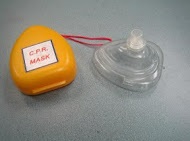
Technological advancements mean that researchers are continually looking for ways to improve the health of individuals. In recent times, a robot-like device has been developed to help with procedures that are pertinent in emergency first aid. The device is set to revolutionize first aid care for those who have suffered a wide range of injuries. The device known as a ReWalk, is the first of its kind across the world, and is still undergoing tests. Its name arises from the fact that it helps individuals to walk with ease so that they can access first aid care if need be.
Facts about the ReWalk
– This device looks like an exo-skeleton as that is one of the handy ways in which it helps its users.
– It is interesting to note that the discovery of this gadget was necessitated by the need to get patients walking. Initially however, the design may have been borrowed from a number of the military equipment that soldiers use to carry heavy equipment. A good number however, began in the medical field. There are similarities between the two because both adequately provide the necessary support at the legs and at the pelvic region. What’s more, they also have motors at the hip region and at the knees joint. The purpose of the motors is to provide movement in the aforementioned areas.
– The devices intended to help with emergency first aid make use of a power source that is found within the structure of the robot gadget. This power source may be stored in a backpack that the frame of the device allows the user to carry with ease.
– One of the key components is located within the computer that allows a user to walk in sync seeing as walking is largely a combination of different muscles within the body. This resonates well with the fact that walking involves taking one foot ahead of the other while the other takes a systematic fall. Technology has made it possible to replicate this motion thus assisting paraplegics to get emergency first aid.
– The use of such devices must be in sync with other therapeutic measures to ensure that the patient receives quality recovery.
– Granted, this is the first of many, so it is imperative that researchers take steps to see whether there are other advancements that can be made in the same regard. Perhaps in the future we could see the use of such an exoskeleton alongside that of wheelchairs that will go a long way in making emergency first aid practical for paraplegics. This will not only allow them to access help with ease, but also to get on with their day-to-day lives in a simpler manner.
– There are many benefits that come with the use of such devices, and they include the fact that the patients find it easy to access medical help, relate with others, and experience less pain as well as lead quality life.